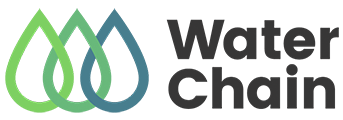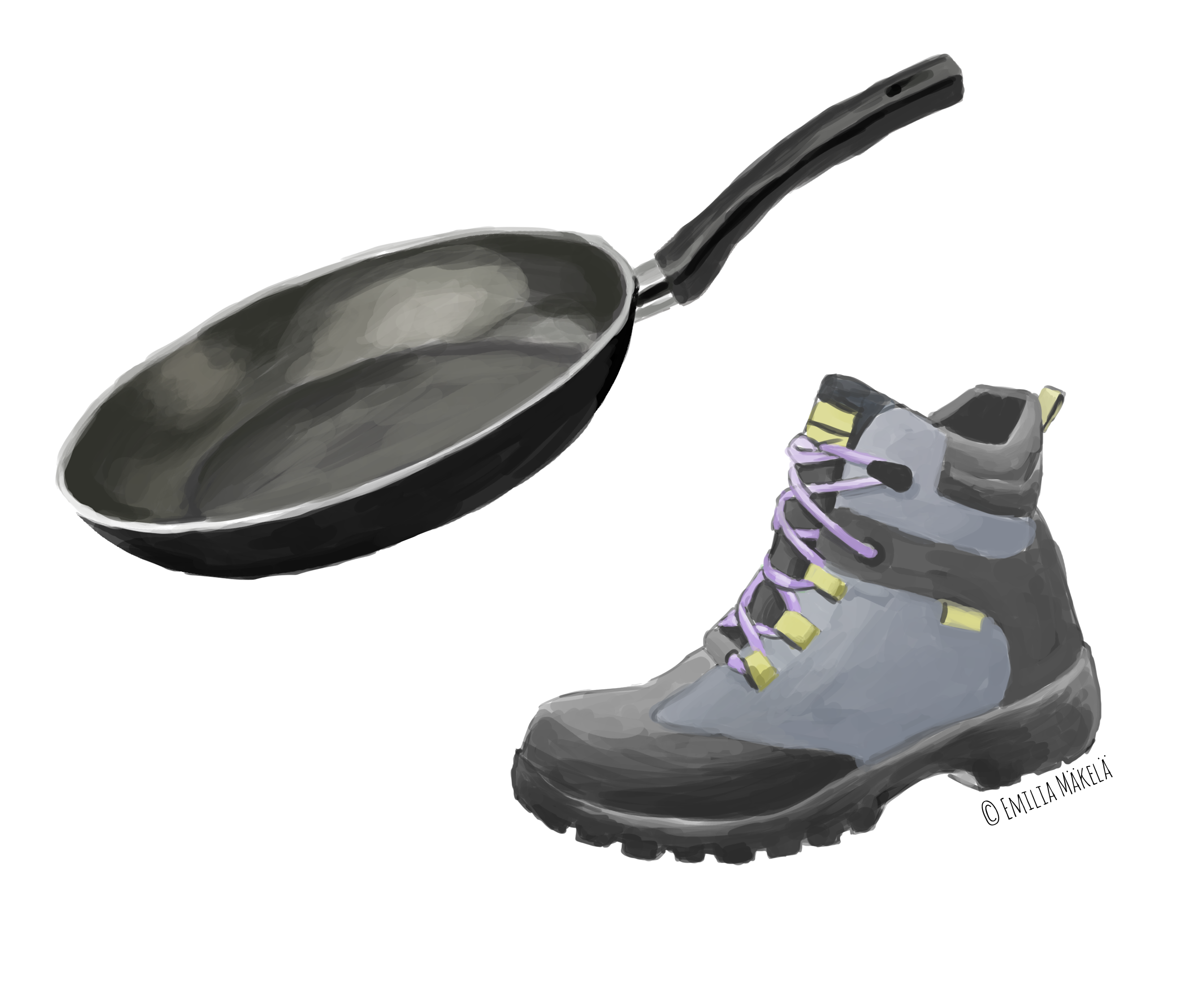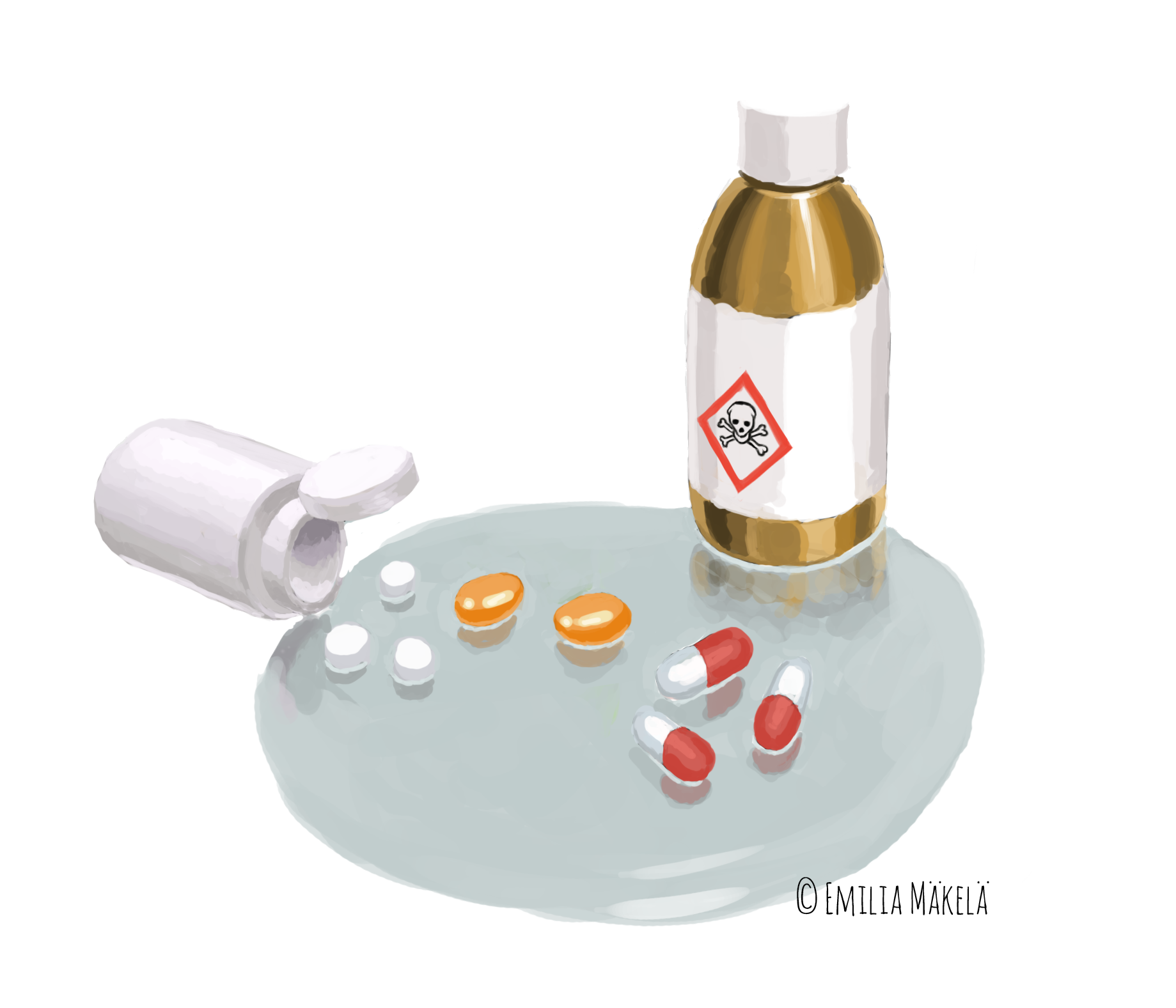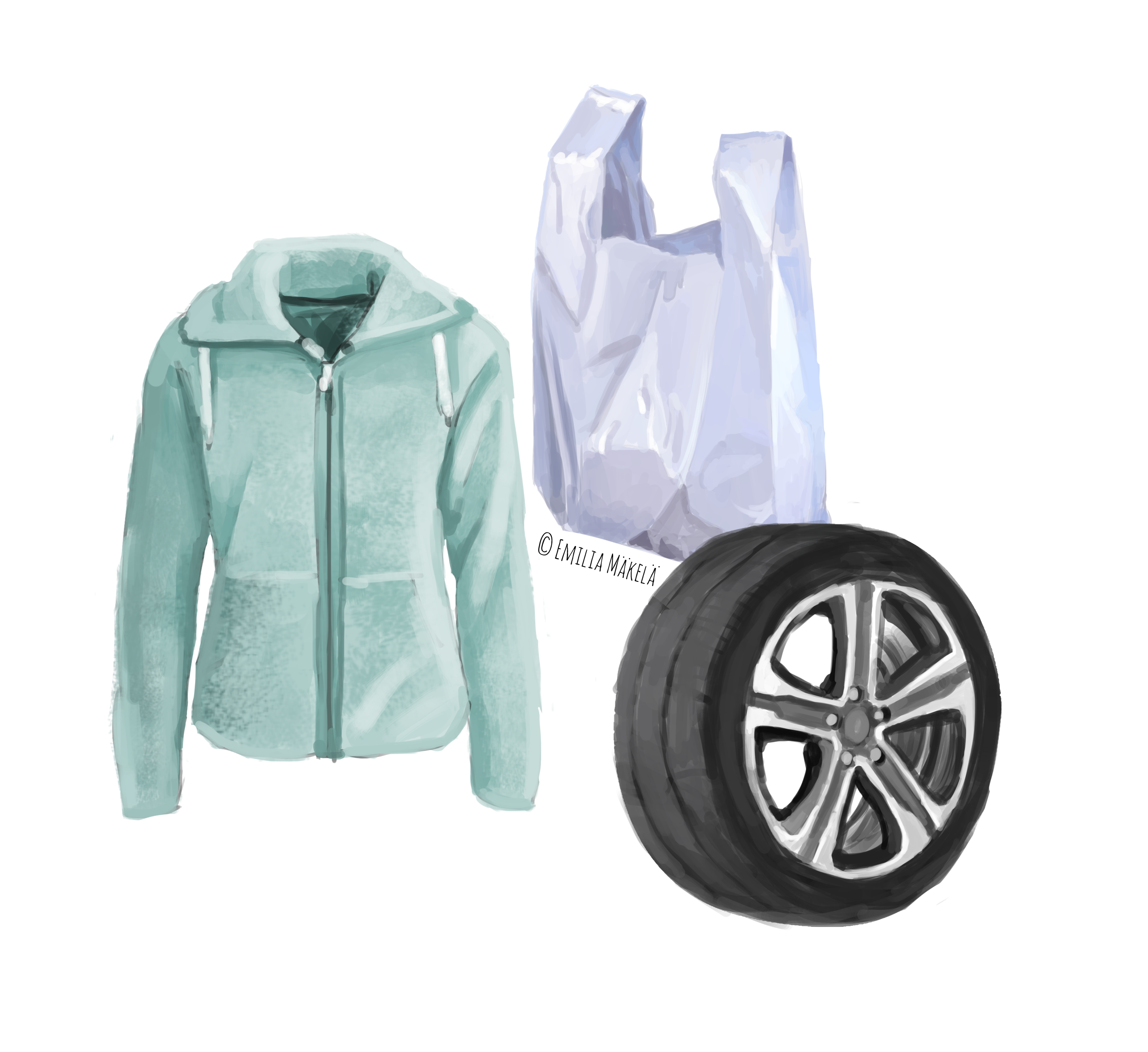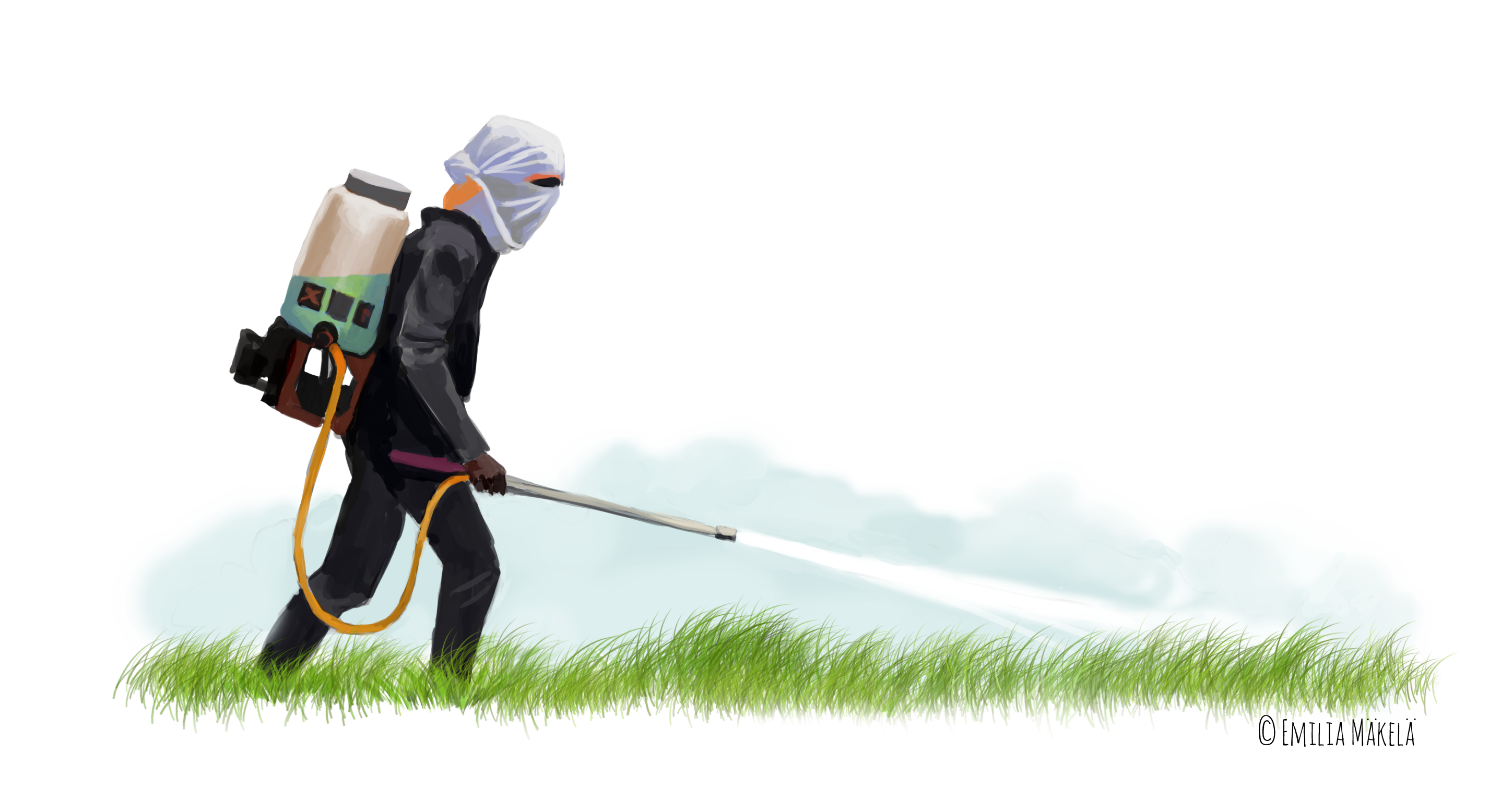Hazardous substances
Man-made synthetic hazardous substances like phthalates and perfluorinated compounds do not occur naturally and therefore become pollutants when released into the environment. These enter aquatic ecosystems through e.g. wastewater treatment plants (WWTPs), which are not designed to remove hazardous substances.
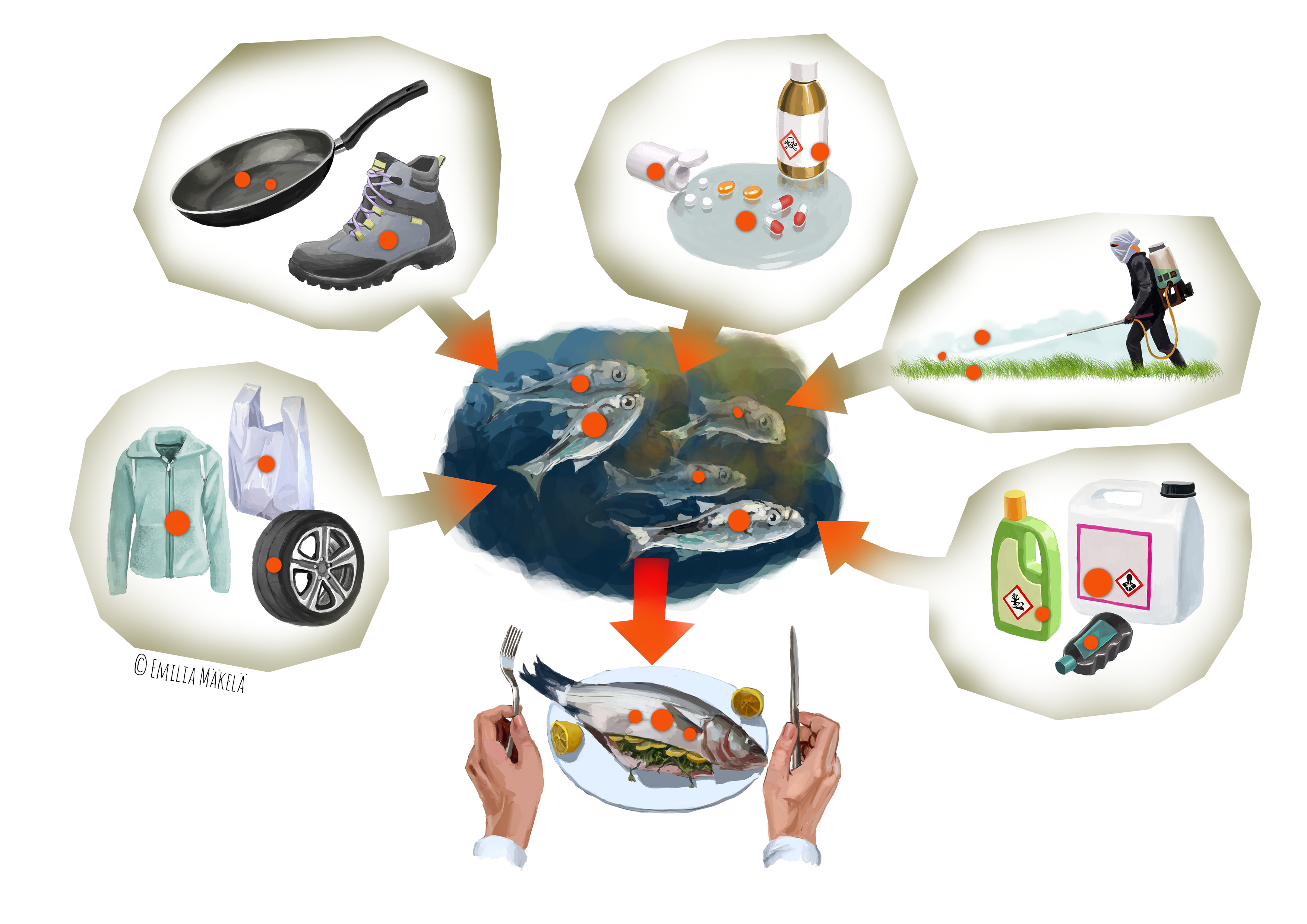
In addition to discharges from factories and enterprises producing or using these substances, the release of hazardous substances to WWTP comes from the daily use of consumer products e.g. plastic products (PVC), non-stick pans, ski waxes, flame retardants in electrical devices, etc. Some hazardous substances bio-accumulate in the food chain and may finally end up on our dinner plate.
In WaterChain project we focused on four groups of hazardous substances that are described in more detail below. At the EU level, these compounds have been recognized as a serious threat:
- Perfluorinated compounds (PFOA, PFOS) are in the list of Environmental Quality Standards (EQS) Directive 39/2013/EU, and are pointed as Baltic Sea Action Plan priority substances
- Pharmaceuticals are in the watchlist, according to EQS Directive 39/2013/EU
- Phthalates (DEHP) that are used for making plastics soft, flexible and more difficult to break are in the list of EQS Directive 39/2013/EU
- 23 pesticides are pointed in the list of EQS Directive 39/2013/EU, the total list including 45 substances.
Environmental Quality Standards (EQS) Directive 39/2013/EU
Baltic Sea Action Plan priority substances
Perfluorinated compounds
Pharmaceuticals
Plastics

